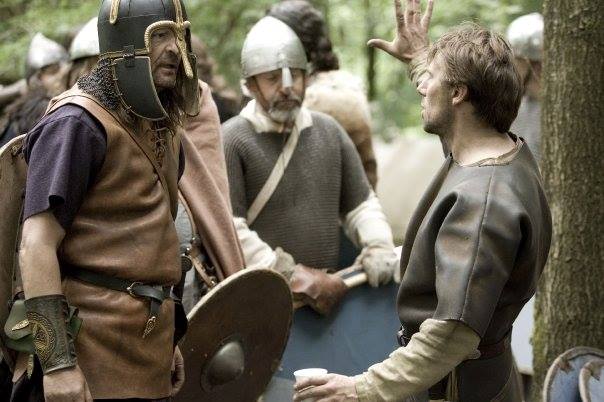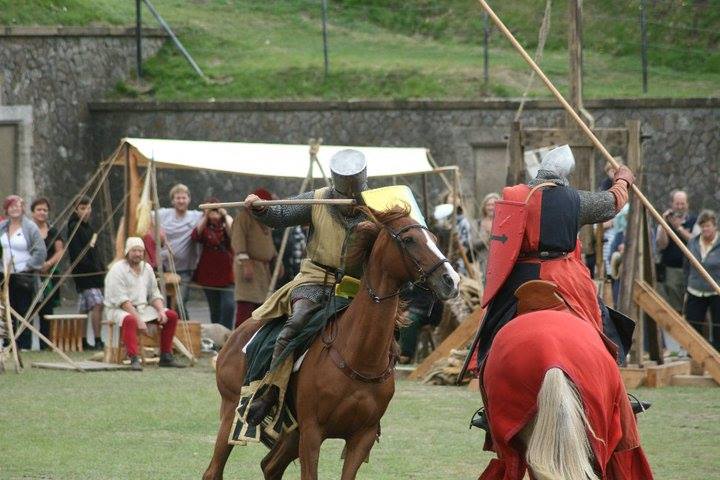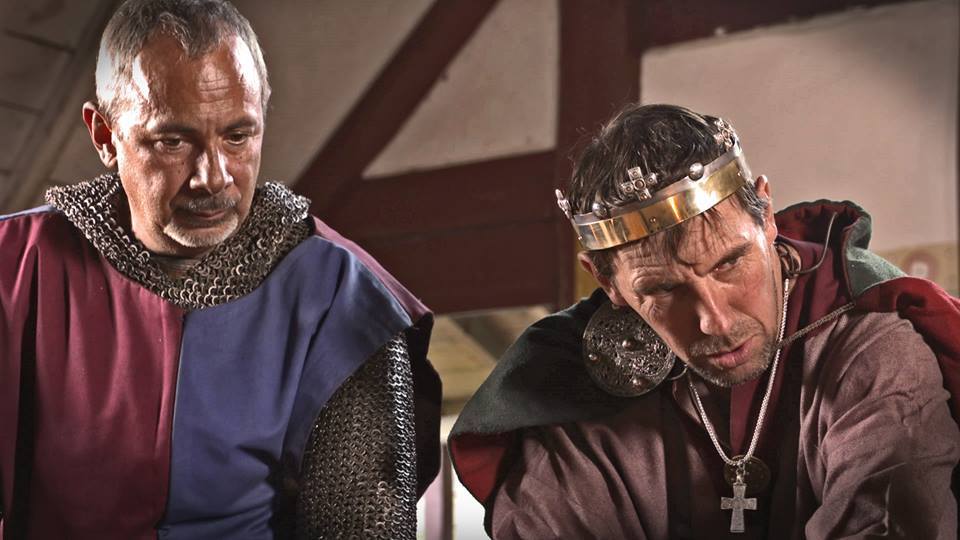Direction and Fight Arrangement
For more than 15 years, Nigel Amos has been bridging the gap between the world of the re-enactment enthusiast and that of the professional performer and has worked with a number of professional show and combat directors.
Nigel cut his creative teeth during six years managing Medway Council’s prestigious ‘Norman Festival’ for Regia Anglorum. Since then he has added dramatic flair and presentation to numerous live events featuring re-enactors, including co-authoring and directing two dramatic performances at York Minster as part of the York Viking Festival.


In recent years, Nigel has choreographed combat in both Fulcrum Television’s ‘Saxon Gold’ programmes for National Geographic (2011), and for Oxford Television’s ‘David Starkey’s Magna Carta’ (2015). Nigel received a screen credit for co-ordinating re-enactors in combat on Hardy Productions' feature-length drama documentary '1066 - The Battle for Middle Earth' for Channel 4 and more recently was credited as a Fight Arranger for Dan Snow's '1066 - A Year to Conquer England (BBC 2016).
On the latter two programmes Nigel worked in concert with the BADC fight directors, who were able to concentrate on their stuntmen and principals while Nigel co-ordinated the action for the 50 or so re-enactors.

Re-enactors and Living History enthusiasts, with the plethora of costume and equipment they can provide, are a remarkably inexpensive albeit rich resource for the filmmaker and are ideal for low-cost, low-detail shoots such as documentaries or for background action on large projects. Re-enactors are typically trained in an unchoreographed form of competitive combat for which they undergo a rigorous training and testing regime to ensure that they and those in combat with them are safe. However, the style of combat is not designed for display and without a fight arranger is not terribly effective on camera or especially realistic.
Because of the gulf between them, combining the usual BADC trained fight arrangers with re-enactors rarely produces a satisfactory or authentic-looking result. They will be used to working with other (usually BADC) trained stuntmen and actors and their work with swords and hand weapons is very much predicated upon the Renaissance-era fencing manuals such as Meier and Taillhoffer, which bear very little relationship with combat of the dark ages and early medieval periods. They will invariably dispense with spears and shields which were the principal armaments of the period and other common hand weapons such as axes will rarely be employed. Typically, they will focus upon swords which will be used in a period-inappropriate style alien to the training of the re-enactors.
Certainly, the exercise can be costly, both in terms of budget and wasted time on set. Nigel Amos’ speciality is in having a good understanding of both worlds, identifying the story the director wants to tell and what is required in the shot and, by understanding the capabilities and limitations of the re-enactors, working with the directors to produce a satisfactory and authentic combat sequence quickly and safely.
